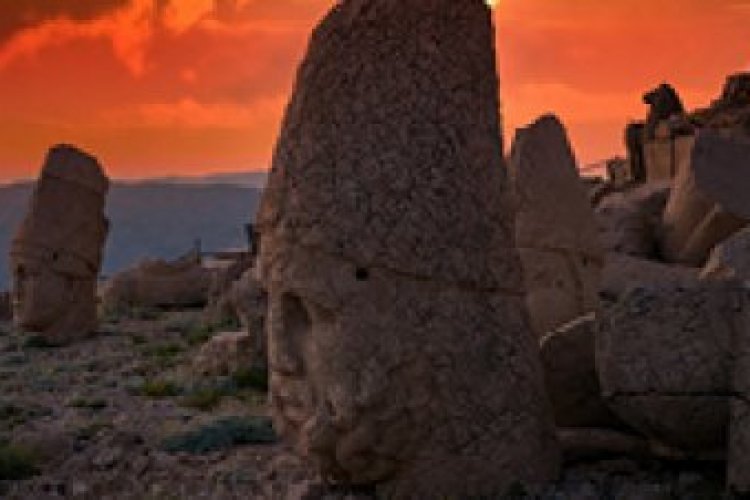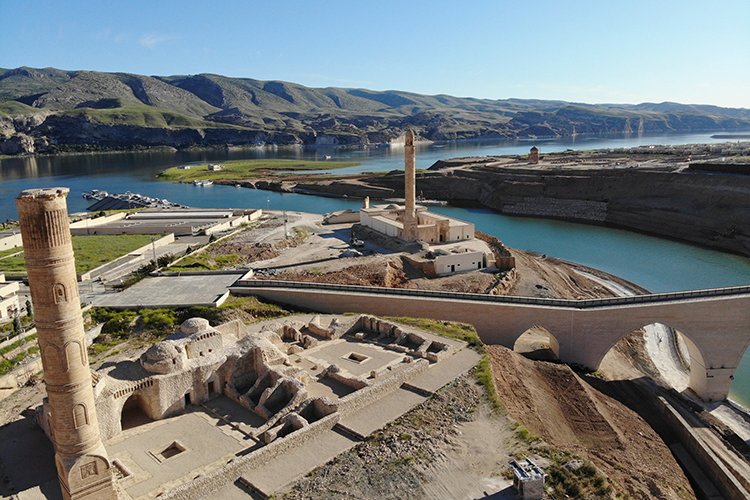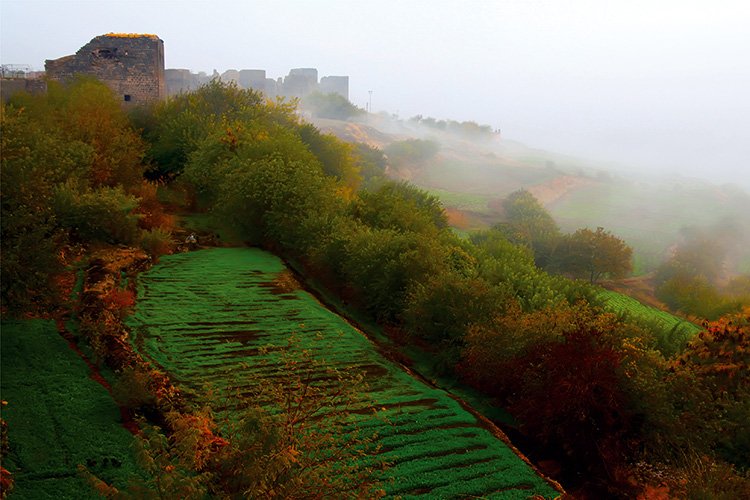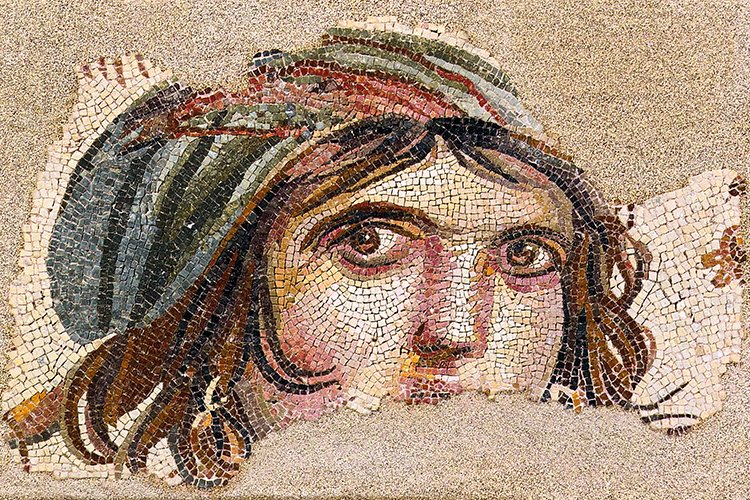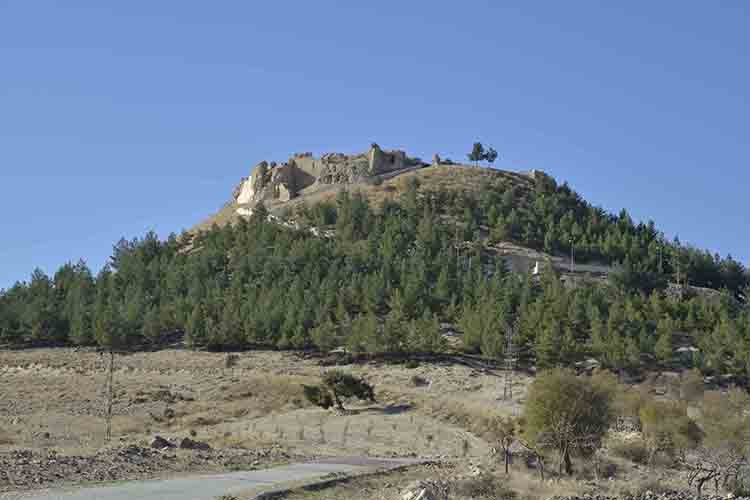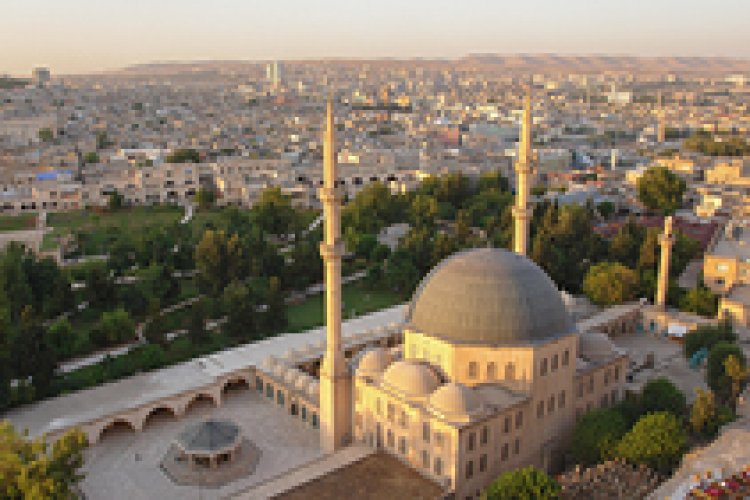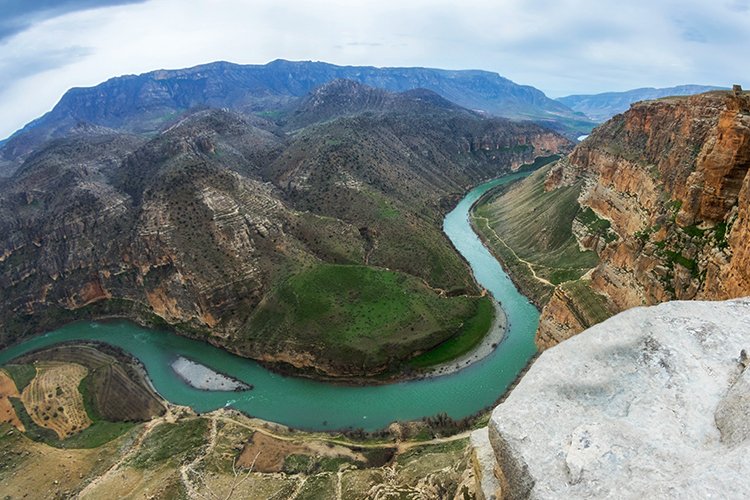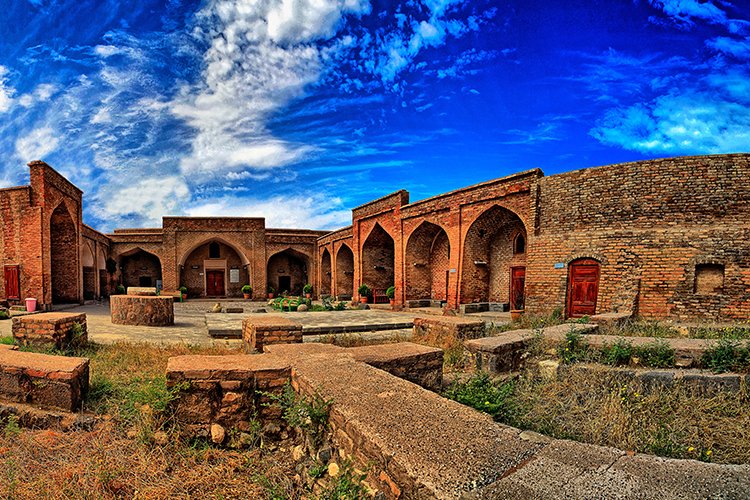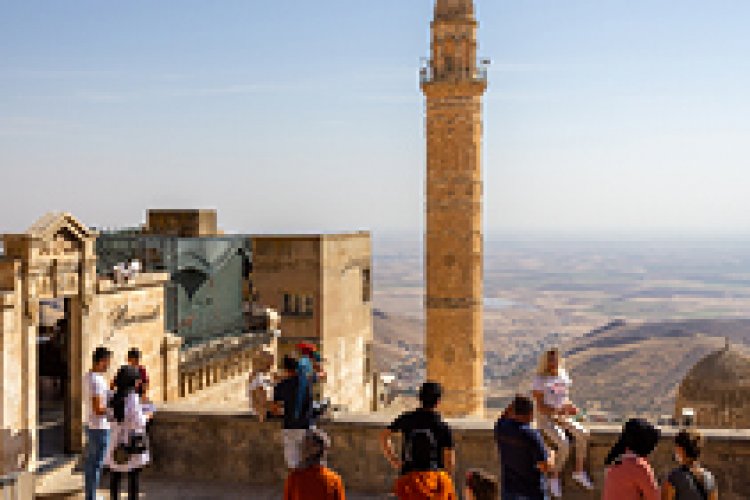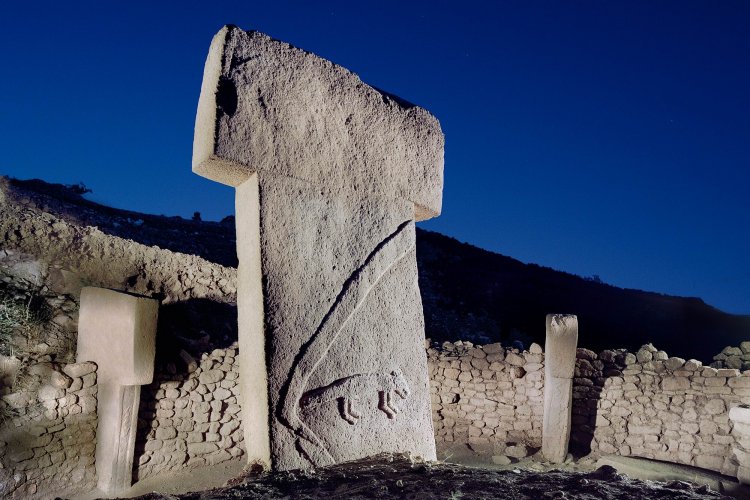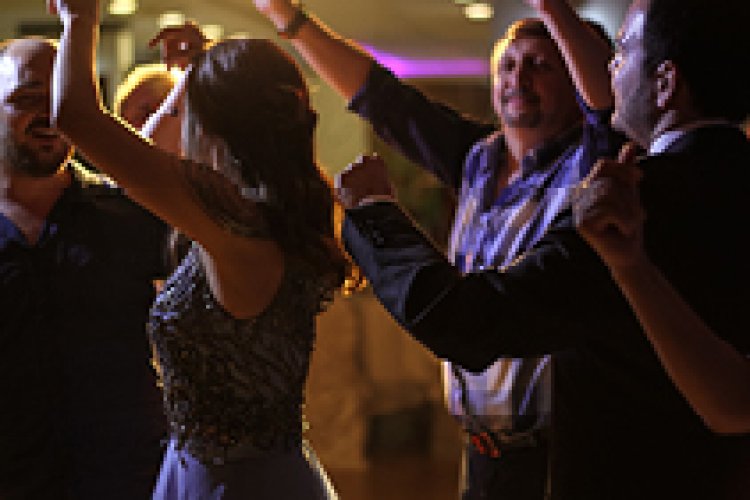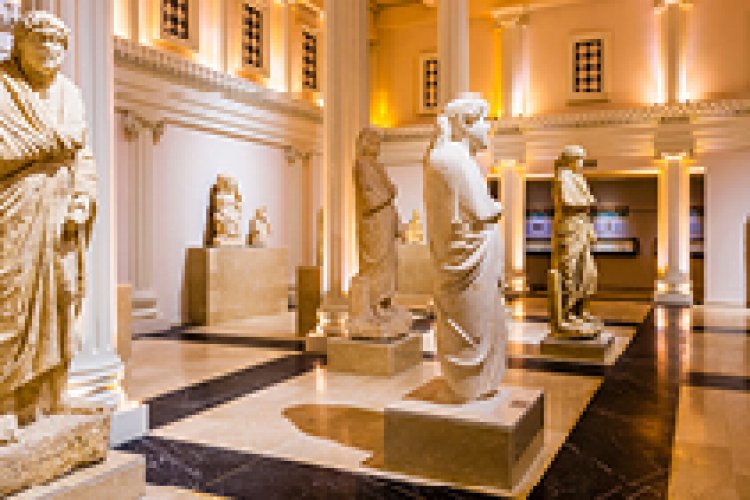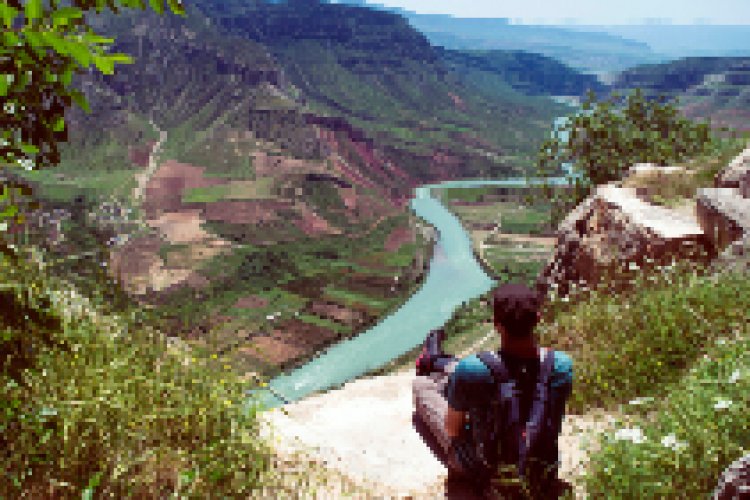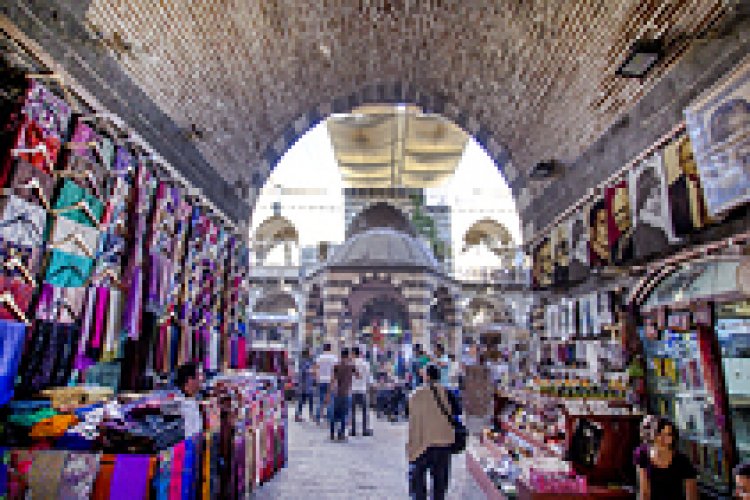Routes
Sanliurfa City Center Route
The route starts at Sanliurfa Archeology Museum. Take a few hours to review the museum's rich archaeological collections, documenting the excavations and stories around Sanliurfa from prehistoric times to the present. Among the most interesting things on display are the "Urfa Man", which is considered the oldest statue in the world, and a replica of Göbeklitepe D Temple.
When you move towards the left part of the Archeology Park from the Sanliurfa Archaeology Museum, you will see a cliff full of caves. The history of the Kizilkoyun Rock Tombs, which consists of 59 caves, some of which have mosaic floors, dates back to the Oshroene (Edessa) Kingdom, the Roman Kingdom and the Byzantine period. Turn around and head towards the large domed building of the Haleplibahce Mosaic Museum, located in the southern part of the Archaeological Park, and take your time to admire the impressive mosaics of the kind that have not yet been uncovered around Sanliurfa. The most famous mosaic of the museum is the 3 m x 9 m eikon of the Amazon queens, Hippolit, Thermodosa, Melanippe and Penthesileia, seen hunting leopards and lions. Take a break from the museums and stop by the Sakip's Mansion which is nearby. Hidden behind the Haleplibahce Mosaic Museum, Sakip's Mansion was built in 1845 by the poet Sakip Efendi and is a good example of 19th century Ottoman architecture. Sakip’s Mansion, currently used as a cafe, is ideal for a quick lunch stop before continuing along the walking route. On the way to the cafe, you will find the partial ruins of the Haleplibahce Roman Baths. The Roman Baths were once part of a vast complex of palaces and villas dating back to the 6th century. Although few traces of this complex remain today, the baths were built according to the classical Eastern Roman (Byzantine) Bath architecture, including stoves, hot rooms, heating system, bath, cold room, pools, water systems and a water well inside them.
After Sakip’s Mansion, return to the Archaeology Park and take the roundabout on Haleplibahce Road towards Balikli Park. After a short walk from the entrance, you will reach Halil-ur Rahman Mosque and Sazeli Ali Dede Mausoleum. Located in the south of Balikligol, the mosque was originally built by Urbisius in 504 as the "Church of the Virgin Mary". The church was later converted into a mosque during the reign of Abbasid Khalifah Me'mun (818-833). The mosque is mentioned as "Ibrahim Halil Dervis Delubrum" in Evliya Celebi’s Travel Book. The L-shaped madrasa next to the mosque was built in 1175 and is believed to have been built on the upstream that feeds Balikligol. Passing through the park, you will follow the crows' footsteps and reach Balikligol. The lake is believed to be the place where Abraham was thrown into the fire by the cruel King Nimrod. It is rumored that when Abraham was thrown into the fire, God turned the flames into water and burning logs into fish. The Turkish name of the lake is based on this: "lake of fish". When you arrive here, take time to feed the sacred fish, have your photo taken while wearing traditional Urfa clothes, and visit the SURKAV souvenir shop. When you head towards the north of Balikligol, you will see the Rizvaniye Mosque and Madrasa. The most attractive aspects of this madrasa, which is understood to have been built in 1736 by Ridvan Ahmet Pasha, the governor of Raqqa in the Ottoman Empire, are its green courtyard and the entrance to Balikligol. The wooden entrance was made using traditional joining and carving techniques without using nails. There is also a U-shaped madrasa on the ground that surrounds the courtyard of the mosque and dates back to 1775. When you move towards the center of the park area, you will see the magnificent Ayn Zeliha Lake with its water fountain. The name of the lake is Arabic and can be translated as "Zeliha's eye (or source)". The lake and the tea gardens around it are a great place to relax and shelter from the hot summer sun. Right next to the Rizvaniye Mosque and Madrasa, you will see the Abraham Cave. According to the legend, the cruel King Nimrod has a dream that a child to be born would destroy his religion and kingdom. Believing this dream will come true, the King orders all children born that year to be killed. Hearing this bullying, Abraham's mother Nona hides young Abraham to the cave. There, Abraham is fed by a gazelle and can drink water from a natural spring in the middle of the cave. After a while, the soldiers find Abraham in the cave and take him before King Nimrod. King Nimrod raises Abraham without having any second thoughts about his growing conditions. Today, this cave is a popular place for Muslims: people come here and pray, drink its water and make wishes with the fish. Complete the route by climbing to the top of the Urfa Castle. What is special about the castle, which is supposed to have been built on the top of a Neolithic settlement dating back 10,000 years ago during the Assyrian period between 812-814 AC, is that it features two 17-meter Corinthian-style columns, which were built during the reign of Manu IX, King of Edessa, in 240-242. On the eastern column these words are written in Syriac: "I am Aftuha, the son of the military commander Barsamash. I built this column and the statue on it for the Daughter of Crown Prince Manu, the Wife of King Manu, my Lady and my precious Queen Salmeth." On the western feet of the castle, the rock tombs dating back to the Edessa Kingdom and the Roman period can be found. Panoramic views of Balikligol, Sanliurfa Museum Complex and Urfa Old City are worth the climb to the top.
Finally, you can reach Barutcu Inn by using the east exit of Balikligol. Expected to be operational in 2018-2019, the Inn will bring together "the best of Urfa"; there will be special shops, cafes and restaurants in accordance with the final destination of the walking route.
